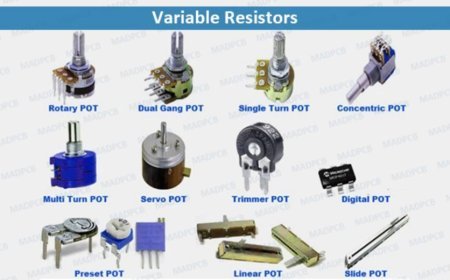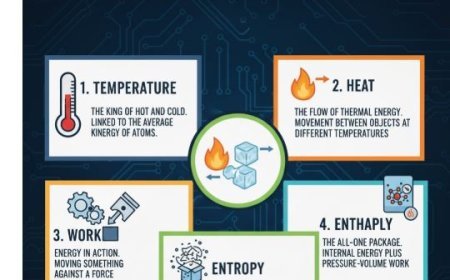DEPLETION AND ENHANCE MODE
Master Transistors: Depletion vs. Enhancement Modes - Control Current Flow!

- Metal Oxide Semiconductor Field Effect Transistor (MOSFET) is one form of FET transistor.
- The gate point of these transistors is electrically separate from the channel that carries current.
- This is why they are also known as Insulated Gate FET-FET. The input resistance of a MOSFET may be very high (usually around 1014 ohms) because the gate and source contacts are insulated.
- When there is no current going into the gate contact, the MOSFET also works like a voltage-controlled resistor, just like the JFET.
- The small voltage at the gate electrode controls the amount of current that flows through the channel between the source and drain terminals.
- Most of the time, MOSFET transistors are used in electrical circuits instead of JFET transistors these days.
- MOSFETs also have four terminals: the Drain (D), the Source (S), the Gate (G), and an extra terminal called the substrate or Body (B). MOSFETs also come in two different types: N-channel (NMOS) and P-channel (PMOS).
- MOSFETs also have four terminals: the Drain (D), the Source (S), the Gate (G), and an extra terminal called the substrate or Body (B).
- MOSFETs also come in two different types: N-channel (NMOS) and P-channel (PMOS). MOSFETs can be broken down into two main types. These are them:
Types of Depletion
- Depletion Type
- Enhancement Type
Depletion Type
- A "usually closed" switch is the same thing as a depletion-type MOSFET transistor. To turn off a depletion transistor, the gate-source voltage (VGS) must be present.
- Above, you can see the marks for the depletion state of both N-channel and P-channel MOSFETs.
- In the above figures, we can see that the fourth terminal (substrate) is connected to the ground. In discrete MOSFETs, however, it is connected to the source terminal.
- The thick line that continues from the drain terminal to the source terminal and doesn't stop demonstrates the type of depletion.
- The line indicates the type of channel, such as N-channel or P-channel.
- A small layer of silicon is put down below the gate point of this kind of MOSFET.
- The mode of loss When the gate-source voltage (VGS) is negative, MOSFET transistors are usually ON.
- When you compare depletion MOSFETs to enhancement MOSFETs, you can see that the first type has more conductivity in the channel.
Enhancement Type
- The Enhancement mode MOSFET is the same as a "Normally Open" switch. To turn the device ON, these transistors need a gate-source voltage.
- Next, you can see the icons for both N-channel and P-channel enhancement mode MOSFETs.
- We can see that there is a broken line between the source and drain, which shows the type of improvement mode.
- In enhancement mode MOSFETs, the conductivity goes up when the oxide layer gets thicker, which brings more carriers into the channel.
- This layer of oxide is usually known as the "inversion layer." In this case, an N-channel is made with a P-type substrate and a P-channel is made with an N-type substrate. This is because the channel is made between the drain and source in the opposite type of substrate.
- If the channel is N-type or P-type, the conductivity is different because electrons or holes move through it.
Depletion Mode
- The mode of loss When there is no bias voltage at the gate input, MOSFETs are usually closed. This is why they are called "Switched ON" devices.
- When the gate voltage goes up in positive mode, the channel width goes up in depletion mode.
- The flow current ID through the passage goes up as a result. But if the gate voltage is more negative, the channel width is very small, and the MOSFET may go into the cutoff region.
- The depletion mode MOSFET is a type of transistor that isn't used very often in electronics.
The Characteristic Curve of a Depletion Mode MOSFET is shown in the picture below.
- You can see above what the V-I properties of the depletion mode MOSFET transistor are. This property primarily illustrates the relationship between drain-source voltage (VDS) and drain current (ID).
- The small voltage at the gate controls the current that flows through the channel.
- With no bias voltage at the gate contact, the channel between the drain and source works well as a conductor.
- More channel width and drain current happen when the gate voltage is positive. Less channel width and drain current happen when the gate voltage is negative.
Enhancement Mode
- The mode for improvement A MOSFET is a type of transistor that is often used. This kind of MOSFET works the same way as a normally-open switch, since it doesn't conduct when the gate voltage is zero.
- A positive voltage (+VGS) is given to the gate contact of the N-channel. This makes the channel conduct and lets the drain current flow through it.
- This bias voltage goes up to a higher positive level. This makes the channel width and flow current through the channel go up even more.
- But if the bias voltage is zero or negative (-VGS), the transistor may turn off and the channel will not conduct electricity.
- In this case, we can say that the enhancement mode MOSFET's gate voltage makes the channel better.
- Mode for improvement They are mostly used as switches in electrical systems because they have a low ON resistance, a high OFF resistance, and a high gate resistance.
- You can find these transistors in CMOS gates, which are used to make logic gates and power-switching circuits. CMOS gates have both NMOS and PMOS transistors.
- The above picture shows the V-I features of an enhancement mode MOSFET. It shows how the drain current (ID) and the drain-source voltage (VDS) are related.
- You can see how an enhancement MOSFET acts in different areas of the graph, including the ohmic, saturation, and cut-off areas.
IMAGE SOURCE
What's Your Reaction?



































